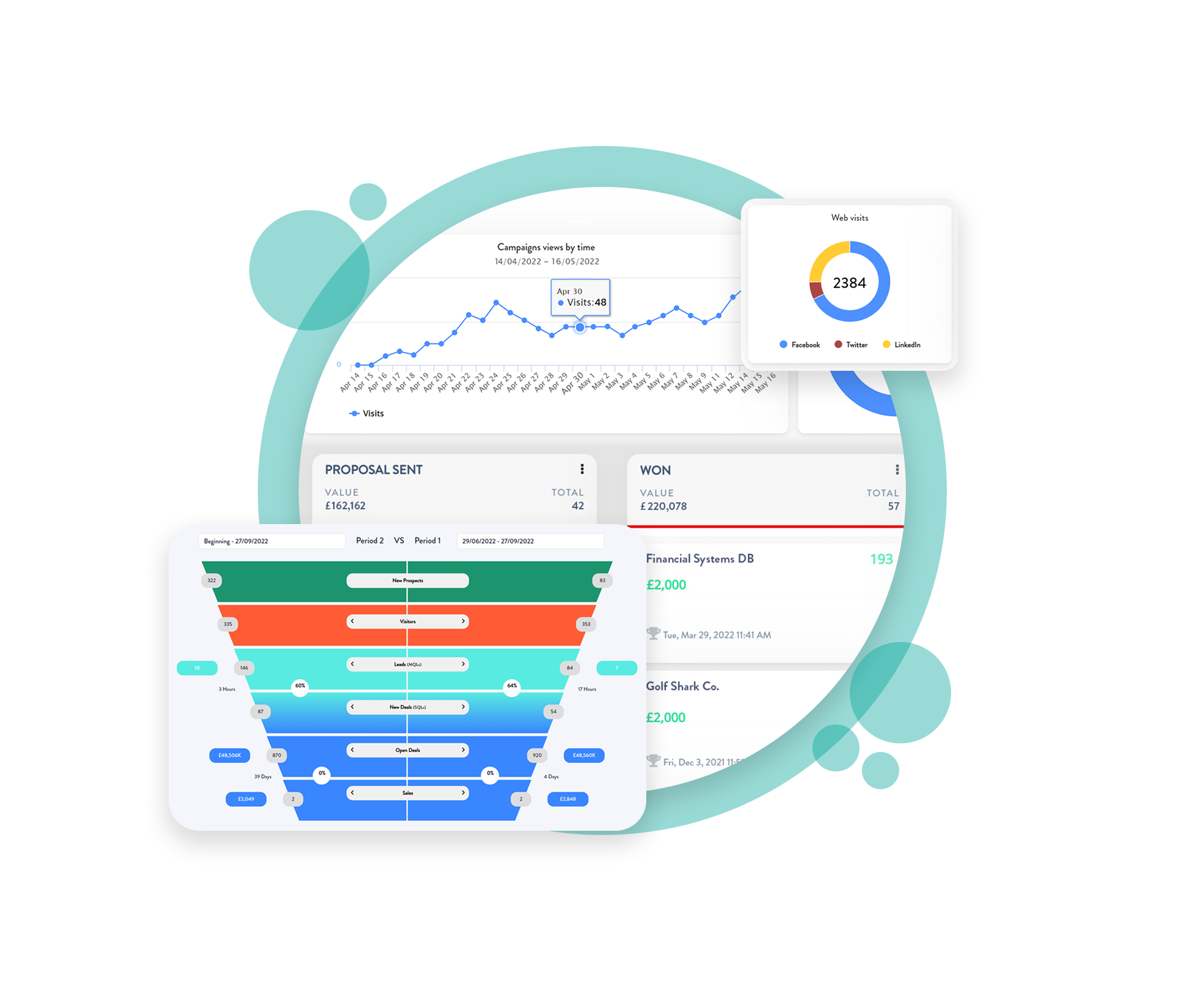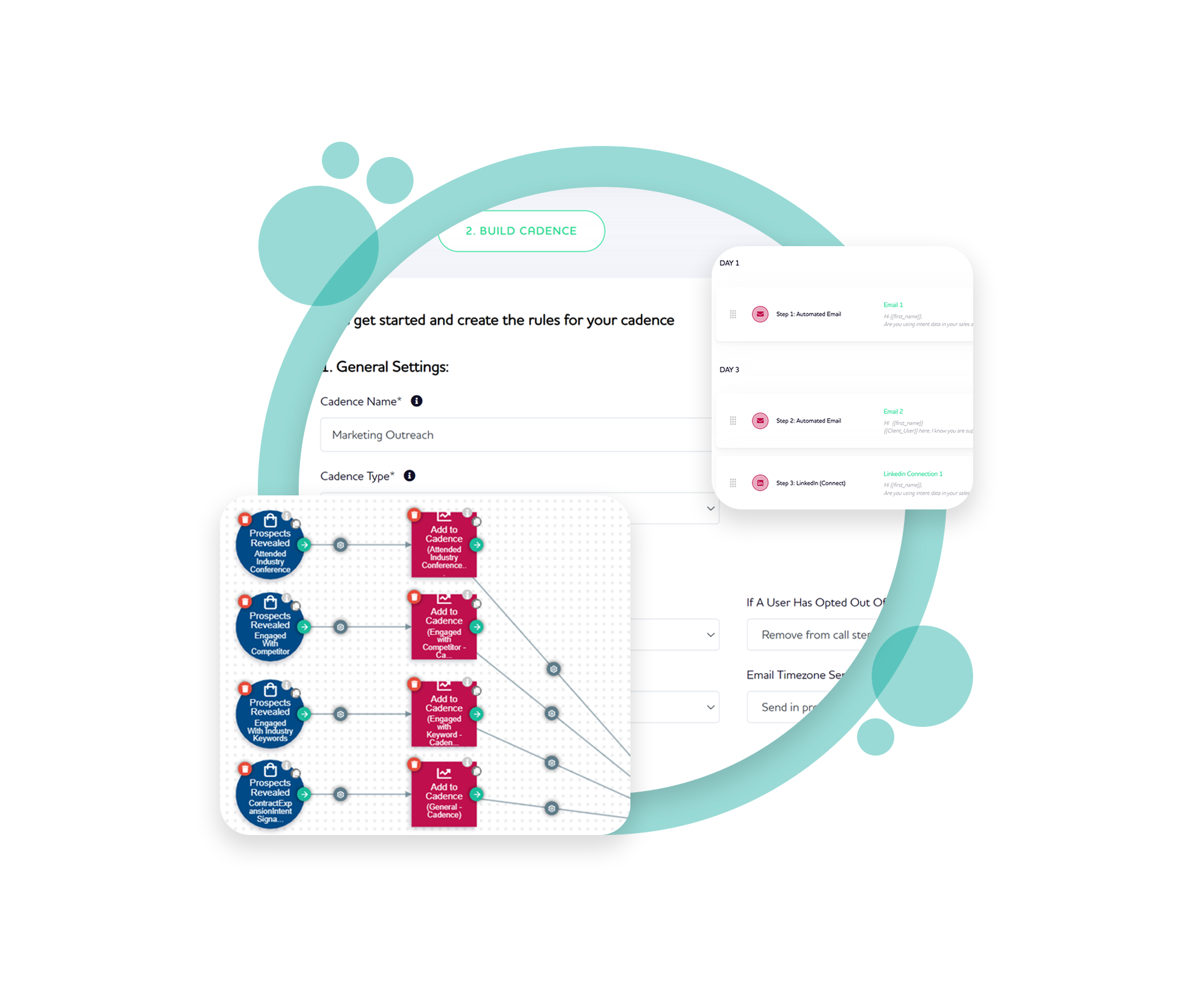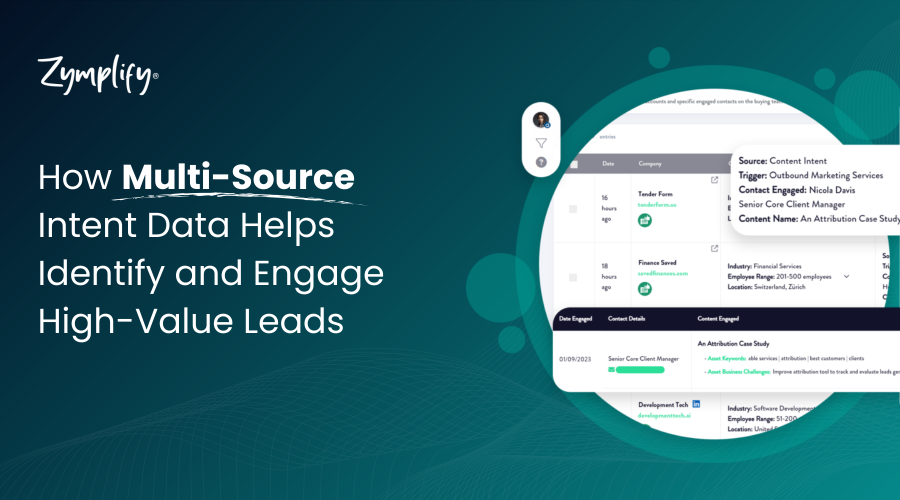Identifying and engaging potential customers is becoming increasingly complex.
Buyers conduct extensive independent research, with 80% of the decision-making process completed before they engage with a sales representative. For businesses looking to connect with these buyers at the right time, intent data offers a powerful solution.
Multi-source intent data, in particular, provides a comprehensive, accurate view of buyer behaviour, enabling businesses to refine their strategies and drive better outcomes.

What is Multi-Source Intent Data?
Intent data refers to signals that indicate a company’s interest in a particular product or service. These signals come from various activities, such as content consumption, website visits, and topic searches.
Traditional intent data typically relies on single-source signals, such as a spike in searches or downloads for a specific topic.
However, relying on one source often fails to capture the full complexity of a buyer’s journey. Multi-source intent data overcomes this limitation by aggregating signals from multiple channels, providing a holistic view of potential customers’ interests and behaviours. This includes:
- First-party sources: Anonymous visitors to your website, email engagement, or social media interactions with your brand.
- Second-party sources: Activity on review sites or engagement with industry-specific platforms.
- Third-party sources: Broader data points like topic searches, content consumption trends, or event attendance.
Why Single-Source Intent Data Falls Short
While intent data is widely used, single-source solutions often fall short in delivering actionable insights. This is because buyer behaviour is multifaceted, involving a variety of channels and activities.
Single-source intent data tends to create challenges such as:
- Incomplete Buyer Journeys: Buyers often use search engines, social media, industry events, brand websites, and peer networks to inform decisions. Single-source data can miss key signals, leading to incomplete or inaccurate assumptions about intent.
- Vendor Dependency: Relying on a single intent data vendor increases vulnerability to price hikes or limited data coverage.
- Saturation and Competition: Shared datasets often mean competing for the same prospects as other businesses using the same data source.
3 Ways Multi-Source Intent Data Helps Identify and Engage High-Value Leads
Multi-source intent data combines diverse signals to create a complete picture of a prospect’s buying journey.
By aggregating intent signals from various channels, businesses can identify companies conducting detailed research on their solutions and competitors, distinguish between casual interest and genuine buying intent, and optimise outreach strategies by focusing on high value leads that are truly in-market.
Account-Based Marketing (ABM)
With the insights provided by multi-source intent data, you can build highly effective and focused ABM campaigns that drive measurable results.
For example, by identifying target accounts that are actively conducting detailed research on your industry or specific solutions, you can zero in on the high value leads most likely to convert. These insights also allow you to create LinkedIn-matched audiences and run laser-focused ad campaigns that ensure relevant ads reach the right people at the right time. This precise targeting reduces wasted ad spend and drastically lowers the cost per lead.
Multi-source intent data also helps your sales and marketing teams to collaborate more effectively. By aligning your efforts around shared intent insights, you can create coordinated outreach strategies that engage prospects across multiple touchpoints, from targeted email campaigns to tailored sales pitches.
Hyper-Personalisation
By tracking and analysing specific signals, such as the products, services, or topics a prospect is exploring, you can go beyond generic marketing and deliver tailored experiences that stand out.
For instance, if a prospect has downloaded a competitor’s whitepaper or repeatedly visited your pricing page, this data can inform hyper-specific follow-up actions. Send an email addressing their likely pain points, showcase case studies that highlight your competitive advantage, or schedule an automated demo invitation tailored to their needs.
Hyper-personalisation extends beyond email campaigns. You can personalise web experiences, adjust chatbot conversations, or even offer dynamic pricing models based on a prospect’s behaviour. This level of personalisation builds trust, deepens engagement, and significantly increases the likelihood of converting high-value leads into loyal customers.

Better Content and Targeting
Multi-source intent data can help to refine your ideal customer profile (ICP) and ensure your marketing efforts are laser-focused. By understanding which buyer groups are most engaged with your content, you can allocate resources more efficiently and target the highest-value leads.
For example, if intent data reveals that decision-makers in mid-sized tech companies are consistently interacting with your content, you can double down on creating materials tailored to their specific challenges. Develop blog posts, whitepapers, or webinars that speak directly to their needs, such as reducing operational costs or accelerating implementation timelines.
Why Businesses Need to Leverage Multi-Source Intent Data
The modern B2B buying process is highly dynamic, requiring businesses to adapt their sales and marketing efforts to ever-evolving buyer behaviours.
Multi-source intent data equips organisations with the insights they need to:
- Engage Early: Identify potential customers during their research phase and provide valuable content or solutions before competitors do.
- Tailor Outreach: Use detailed insights to craft personalised messaging and offers that resonate with specific buyer needs.
- Boost Efficiency: Focus efforts on accounts most likely to convert, reducing wasted time and resources.
Zymplify’s Buyer Intent Activation and Intelligence Platform integrates these diverse signals into a single, actionable system.
Unlike many platforms that only provide data or tools, Zymplify offers both. It not only consolidates data from providers like Bombora and Continuity but also validates and activates this data to turn insights into actionable strategies.
With Zymplify, you can:
- See which companies are actively researching your solution.
- Create targeted campaigns in minutes.
- Engage high-value leads with one click through integrated tools.
This approach helps to identify, target, and engage the right prospects more effectively without the complexity of managing multiple subscriptions or tools.
Transform Your Lead Generation with Intent Data
Multi-source intent data is a game-changer for businesses aiming to stay ahead in today’s competitive landscape. By combining signals from diverse channels, it provides a holistic view of buyer behaviour, enabling smarter decision-making and more effective outreach.
However, realising its full potential requires the right tools and strategies. At Zymplify, we empower businesses to harness the power of intent data through a comprehensive, user-friendly platform designed to deliver actionable insights and drive meaningful results.
Explore our blog to find more insights, top tips, and strategies to refine your sales and marketing efforts with intent data.




